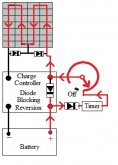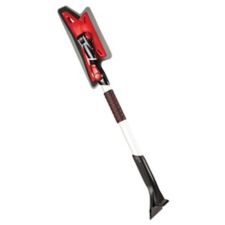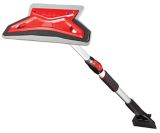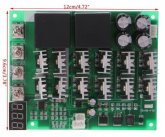I guess I would fall into the 'classicaly trained' bucket, but I have paid a lot of tuition to the school of hard knocks too. The interesting thing about tuition is this: Whether you pay it for classical education or to the school of hard knocks does not matter. What matters if if you take the opportunity to learn from the experience. (I am sure we have both seen people that don't)
As far as the semantics goes, you are right, it is good to know the common usage(s) of a term because it helps me understand what others are trying to say. It is also good when I am searching for a particular part... if I know multiple names for it, I am more likely to find something that works for what I need.
However, 1) not everyone uses the same definitions and 2) I find terms like these are interchanged sooo much they loose their specific definition.
Take a look at this search result for rheostat
View attachment 4497
Notice the center picture calls it both potentiometer and Rheostat (and trimmer).
I don't care if it is called a Trimmer, Potentiometer, rheostat or twisty-turny thingy.... I go to the spec sheet. Can it do what I need (Voltage, amperage, resistance, or whatever)?
I'm the same way, I don't much care if someone uses 'Common Usage' or not.
It wasn't an insult to the guys with formal educations either, it's just the way they are trained to think collides with what I do some of the time...
They can always work whatever out a different way, with safety in mind, I'm more of a small scale test, and if I still have my eyebrows I scale up...
While the line blurs with me on Rheostat, since a proper Rheostat is wire wound with a Load contactor arm, And the rest are carbon strip that handle virtually no amperage but do micro voltage really well.
With the one I use, from the local auto parts store, ceramic pot to handle 30-40 amps worth of heat from resistance.
Under $20, on the shelf most times, and with these small systems using MC4 connectors (20 Amps Limit) it works fine.
Like I said, balance in the system pays off in different ways... this just happens to be one of them.
$20 per panel string/charge controller to NOT chisel ice off the panels is worth it for me...
If I have to extend to jump Isolation Diodes between panel strings, I normally don't do it,
So when I say 'Small System', I'm talking REALLY SMALL, like 1-4 panels small...
The surplus sites are showing 500 watts of Rheostat for $120. When used on 400 Watts of panels pretty much means you can start at zero and work up to what it takes to melt the panels.
Like I said, it works for SMALL PANEL STRINGS.
(Big panel strings are usually in series, so you just clean off the first panel...)
If you want to use Semi-Conductors that's up to you...
Or not use one at all and chisel/chemical soak the panels, it's up to everyone what they want to do, like I said, I'm not trying to sell it as a home game, just something you can try if you want to, or not...
I would think a healthy PWM for bigger DC motors would work also, but I haven't tried them.
Just like the $5 worth of propane to melt off the patio instead of shoveling.
Keep in mind, my back was broke in 5 places, neck in two, missing more than half a lung, so I don't do shovels in sub freezing weather if I don't have to...
I was so hard on aircraft the Marine Corps sent me home, I was costing them too much!
I'd rather stay in the Moose Cave & Martini Bunker where it's warm and let things melt on their own!









